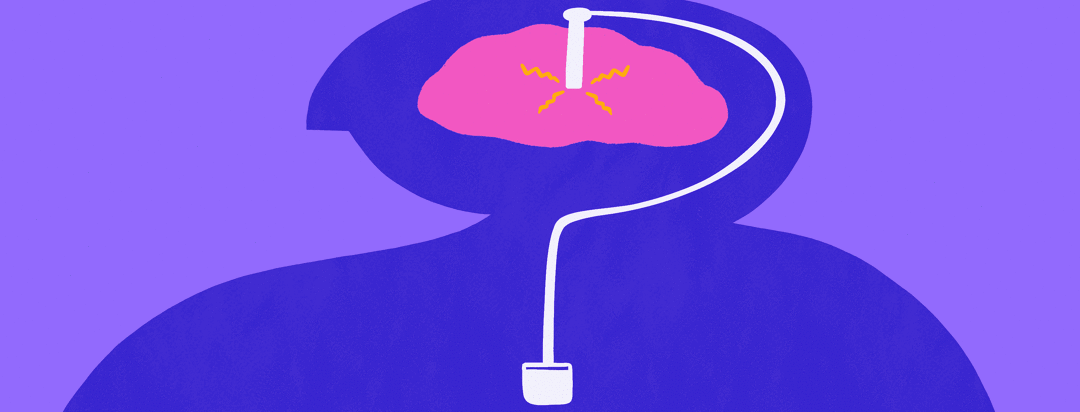Does Deep Brain Stimulation Treat Lennox-Gastaut Syndrome?
Reviewed by: HU Medical Review Board | Last reviewed: April 2023 | Last updated: October 2025
Lennox-Gastaut syndrome (LGS) is a severe type of epilepsy. Seizures usually start before 4 years old. People with LGS have many types of seizures, including tonic seizures, in which muscles become stiff. Problems with mental processes (cognition) and behavior also are common. About 1 to 2 percent of people with epilepsy have LGS.1
LGS can be very hard to treat. Anti-seizure drugs and other treatments may control seizures. Initial studies have shown deep brain stimulation (DBS) may also treat LGS. DBS is a new treatment for epilepsy that may be used if drugs do not work.1
Featured Forum
View all responsesWhat is deep brain stimulation?
DBS is a procedure that delivers an electrical current to part of your brain. This current can stimulate nerve cells in that area. It can improve how well those nerve cells work and communicate. Experts do not know exactly how or why it works. But it can help people with some conditions that affect the brain, including:2-4
- Epilepsy
- Parkinson's disease
- Uncontrollable shaking (essential tremor)
- Uncontrollable muscle tightening (dystonia)
- Obsessive-compulsive disorder
DBS uses a device called a pulse generator that is inserted under your skin near your collarbone. This device connects to 1 or more wires and delivers electrical current through these wires to the brain.3,4
Your doctor programs and activates the pulse generator. The amount and frequency of stimulation will depend on your situation.3,4
Can deep brain stimulation treat Lennox-Gastaut syndrome?
DBS is an emerging treatment for severe types of epilepsy, including LGS. A small study looked at DBS in 13 people with LGS. The study found that DBS reduced seizures by 80 percent. But researchers did not compare these results with people who did not undergo DBS.5,6
A larger study called the ESTEL trial better tested the results of DBS. Doctors placed pulse generators in 19 people with LGS. Three months after surgery, half of the people in the study received stimulation, while the other half did not. This study showed that people with LGS who received DBS had:5
- 50 percent fewer self-reported seizures
- 50 percent fewer seizures determined by electroencephalography
- Seizures that happened less often
The ESTEL trial suggests that there are benefits of using DBS to treat LGS. But it did not show that DBS improved cognition or behavior.5,7
In the ESTEL trial, doctors delivered electrical currents to the centromedian nucleus. This is an area of the brain involved in attention and arousal. But delivering currents to other areas of the brain may allow DBS to work better. Using different amounts and frequencies of stimulation may also allow DBS to work better. More research is needed to understand the best way to use DBS to treat LGS.5,8
What happens before and during DBS?
Before the procedure, your doctor will perform tests to find the best places for the wires to enter your brain. These tests may include magnetic resonance imaging (MRI) and computerized tomography (CT) to capture images of the brain.
After the tests, you may then need 2 to 3 surgeries to complete DBS placement. These will be done while you are under anesthesia. Ask your doctor how to prepare for surgery. They may ask you to:3,4
- Stop taking certain medicines
- Use certain shampoo or other skin products
- Avoid food and liquid before the procedure
During the first 1 or 2 procedures, your doctor will insert the wires into each side of your brain. During the last procedure, your doctor will implant the pulse generator and connect it to the wires. Talk to your doctor about how to care for the surgical areas. Also, ask them about recovery time and activities to avoid.3,4
A few weeks after the last surgery, you will have a follow-up appointment. This is when your doctor will program the pulse generator. During the first DBS programming, you may feel a slight shock or tingling sensation. This is temporary. Your doctor will adjust the levels and settings to best meet your needs. It may take months to find the right settings.3,4,9
What are the possible side effects?
DBS is usually a safe procedure. It is rare for people to feel any sensation during treatment. But some people may feel slight sensations such as tingling down an arm or leg or twitching of the face muscles. These usually go away and do not last long. But any type of surgery has risks. Brain stimulation also can cause side effects. Your doctor may adjust your stimulation program to reduce the risk of side effects.2,4,5,9
The ESTEL trial observed the side effects below after surgery:5
- Infections
- Seizure and seizure-related injuries
- Temporary drowsiness
- Headache or pain
- Fatigue
- Drooling or dribbling
- Temporary weight or appetite change
They also observed the side effects below after stimulation:5
- Numbness or tingling
- Headache
- Fatigue
These are not all the possible side effects of DBS. Talk to your doctor about what to expect during DBS. You should also call your doctor if you have any changes that concern you about DBS.
If treatment does not work or if side effects cannot be tolerated, DBS can be adjusted. It can also be reversed if needed. This requires another surgery to remove the leads and pulse generator.10

Join the conversation